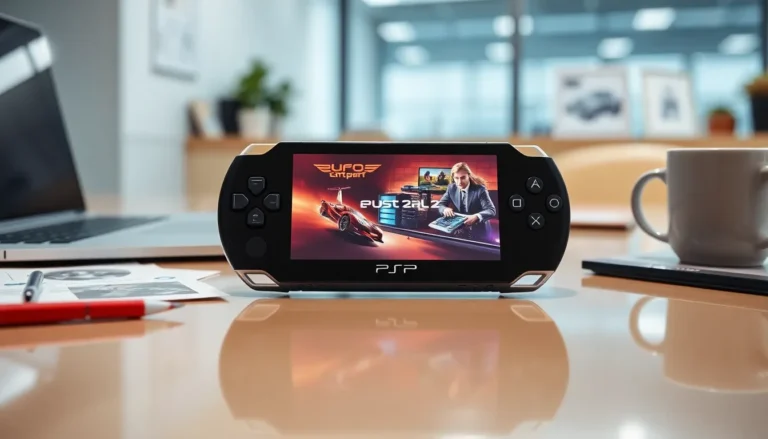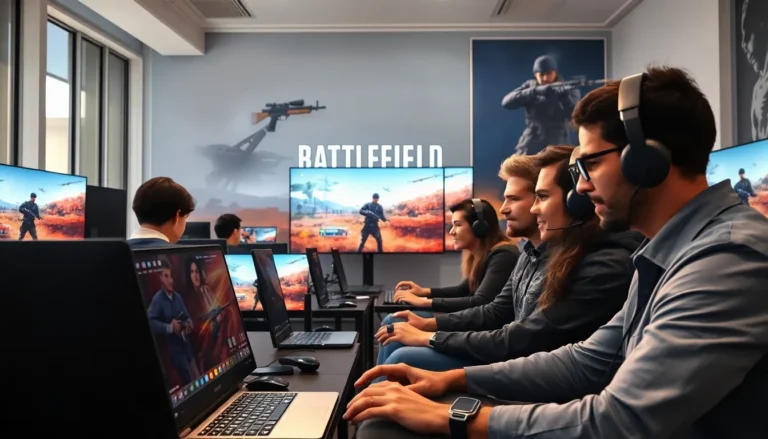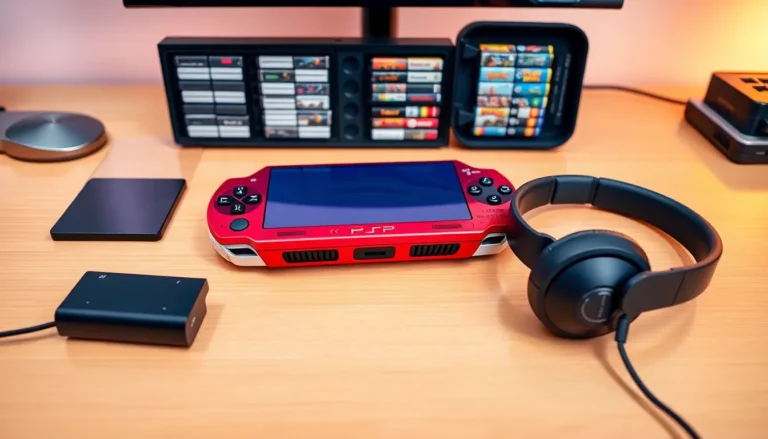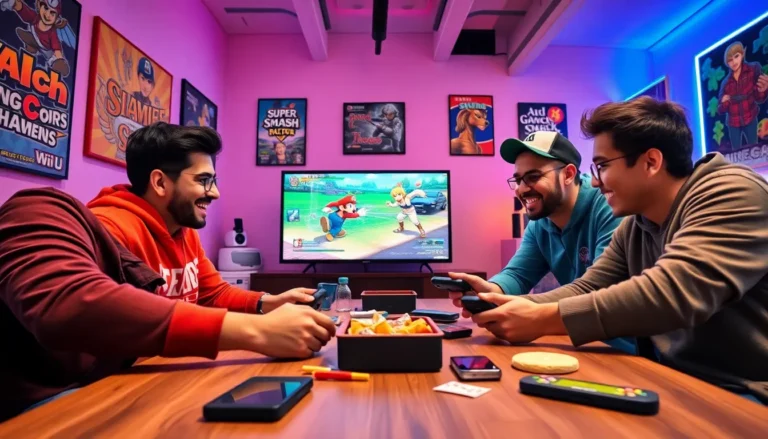Table of Contents
ToggleEver tried to hook up your beloved Nintendo Wii to a modern TV, only to be greeted with more fuzz than a 90s sitcom? Fear not. The world of HDMI cables is here to save the day and your gaming experience. With an HDMI connection, you can finally say goodbye to those dreaded yellow, red, and white cables. We’ll dive headfirst into the benefits of using HDMI, how to make the switch, and even tackle some common issues. So, grab your controller, and let’s get plugged in.
Understanding HDMI and Its Benefits

HDMI, or High-Definition Multimedia Interface, has become the standard for transmitting audio and video signals over a single cable. This means you get high-quality visuals and sound without the clutter of multiple wires. One of the standout benefits of HDMI includes support for high-definition resolutions, allowing your games to look sharper and more vibrant than ever before. Plus, with digital audio capabilities, you can enjoy immersive sound that really pulls you into the gaming world.
Also, HDMI supports features like CEC (Consumer Electronics Control), which lets you control multiple devices with one remote. Imagine switching from Netflix to Mario Kart without fumbling for multiple remotes. How convenient is that? Overall, upgrading to HDMI is a no-brainer for a more seamless gaming experience.
Connecting Your Nintendo Wii to HDMI
Connecting a Nintendo Wii to an HDMI port might sound like a tech challenge, but it’s as easy as pie once you have the right gear. First, start by purchasing an HDMI adapter specifically designed for the Wii: these adapters convert the Wii’s output into HDMI format. Once you have your adapter, follow these steps:
- Plug the Adapter into Your Wii: Insert the adapter into the AV multi out port on the back of your Wii.
- Connect the HDMI Cable: Next, take an HDMI cable and plug one end into the adapter and the other end into your TV’s HDMI port.
- Switch Input on TV: Turn on your TV and switch the input to the corresponding HDMI port you used.
And just like that, you’re ready to jump into your favorite games with better quality. It’s a straightforward process that anyone can handle.
Wii to HDMI Adapters: Pros and Cons
When considering a Wii to HDMI adapter, it’s helpful to weigh the pros and cons to decide if it’s worth the investment.
Pros:
- Simplified Setup: As mentioned, switching from composite cables to HDMI reduces the mess of multiple cords, less clutter means more gaming fun.
- Enhanced Quality: HDMI adapters generally provide clearer picture quality along with improved audio. Many players notice the difference instantly.
- Compatibility: Most modern TVs are equipped with HDMI ports, ensuring you won’t have to dig out a crate of outdated cables.
Cons:
- Cost: While adapters are generally affordable, investing in higher-end models can be a bit pricey.
- Compatibility Issues: Not all adapters are created equal. Some might not work perfectly with every model of the Wii or TV, so it’s crucial to do your assignments before committing.
- Limited Functions: Remember that not all adapters support advanced features like 4K or high refresh rates, which might be a downside for those seeking premium performance.
Enhancing Your Gaming Experience
Once your Nintendo Wii is connected via HDMI, the fun doesn’t stop there. You can further enhance your gaming experience with a few additional tweaks.
Upgrade Your TV Settings: After switching to HDMI, spend some time optimizing your TV settings. Adjust the brightness, contrast, and color settings to make your games pop. A little adjustment can make a huge difference.
Use Quality Speakers: For the audio enthusiasts, consider investing in external speakers or a soundbar. With enhanced audio fidelity, your games will feel even more immersive, as if you’re really in the middle of the action.
Explore Upscaling Options: Some modern TVs come with upscaling features that can enhance the graphics of your older games. It might not be on par with next-gen graphics, but it can still breathe new life into your classic Wii titles.
Troubleshooting Common HDMI Issues
Even with the best equipment, HDMI connections can sometimes throw a fit. Here are some common problems and how to troubleshoot them:
- No Signal: This might happen if the TV input isn’t set to the right HDMI port. Double-check that.
- Poor Quality Display: If the picture looks blurry, make sure that the adapter is securely connected. Sometimes a loose connection can ruin your gaming vibe.
- Audio Issues: If sound isn’t coming through, check the TV’s audio settings. Ensure that the audio output is set correctly, especially if you’re using external speakers.
If none of these tips do the trick, a quick online search for your specific adapter model can often yield additional troubleshooting steps.







